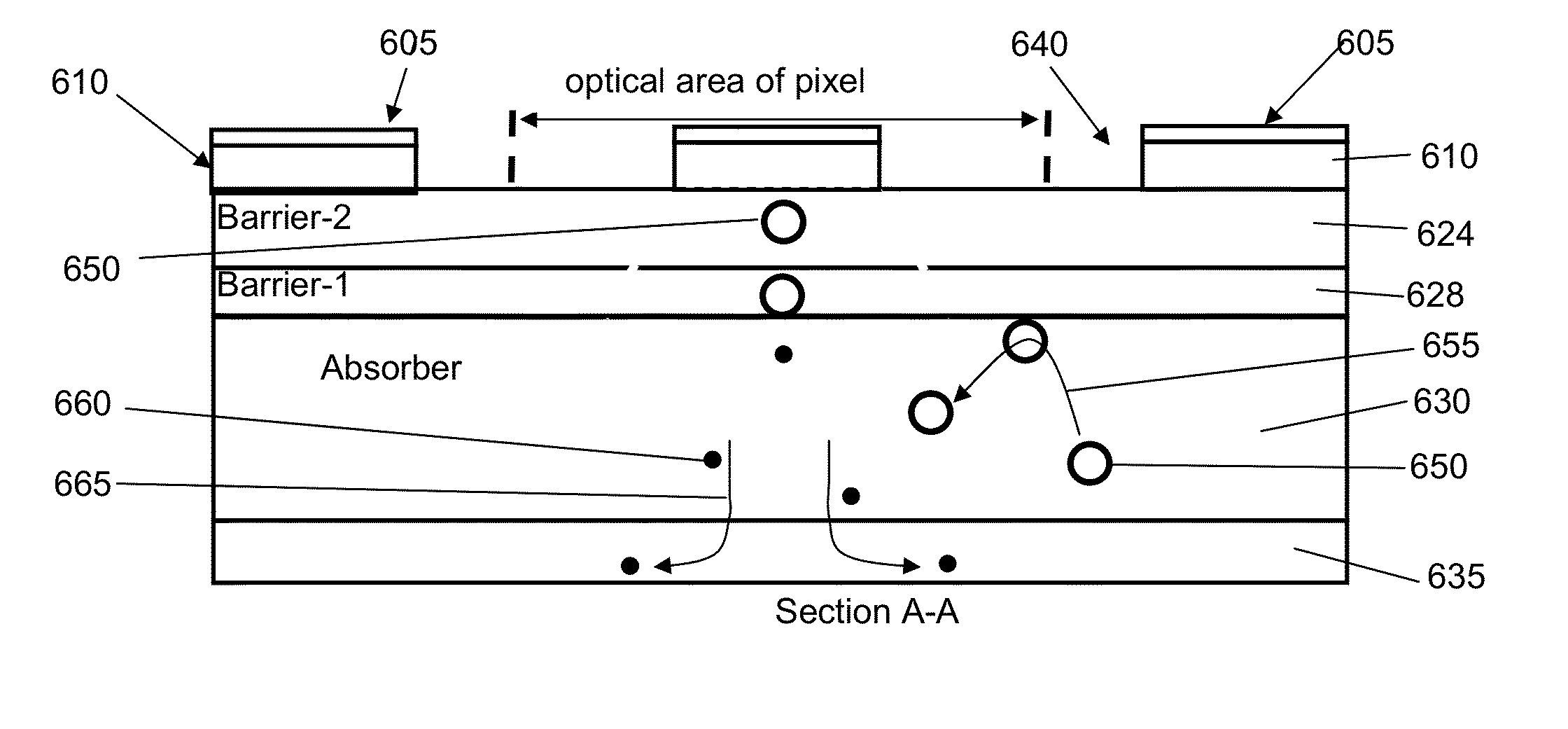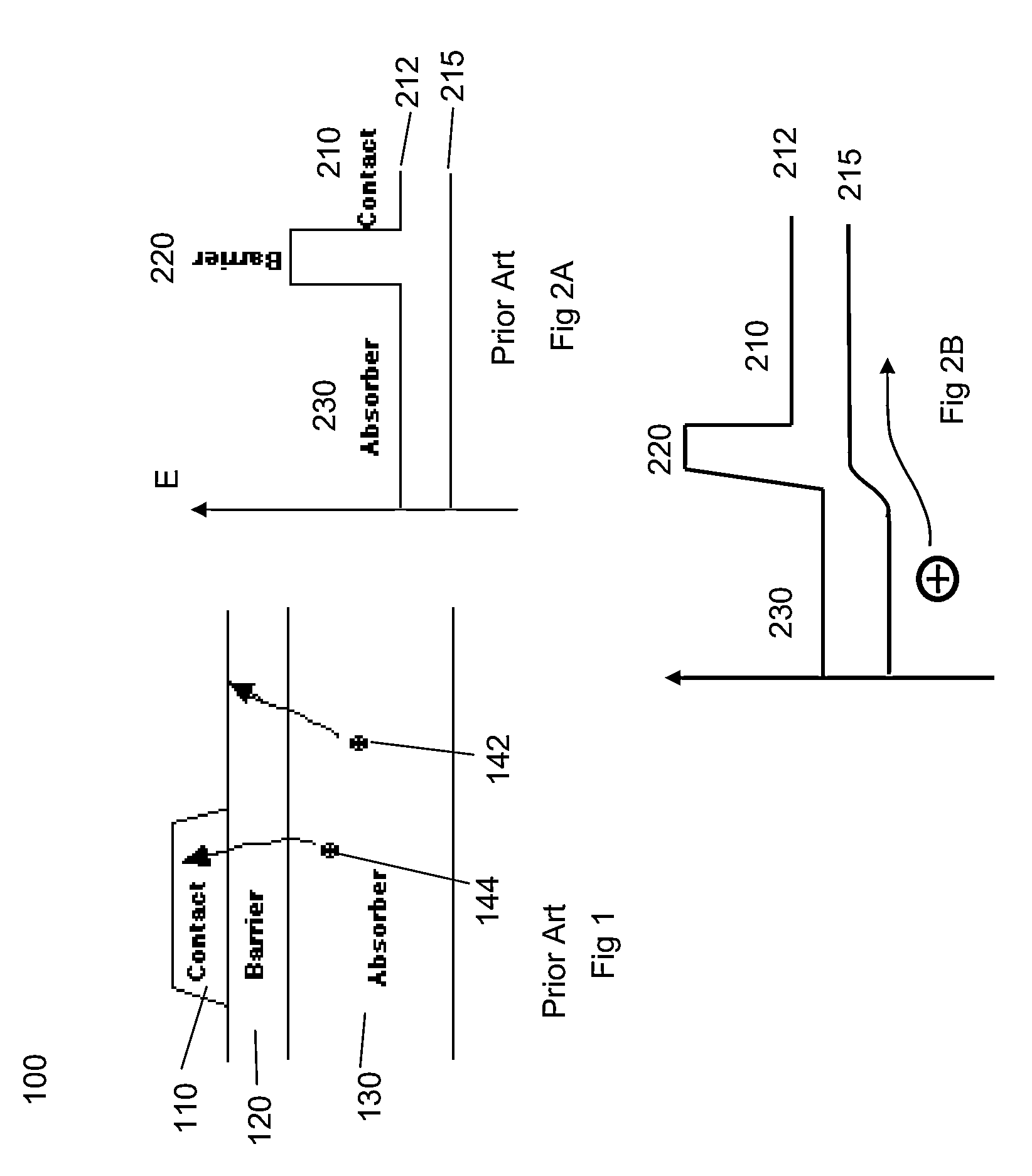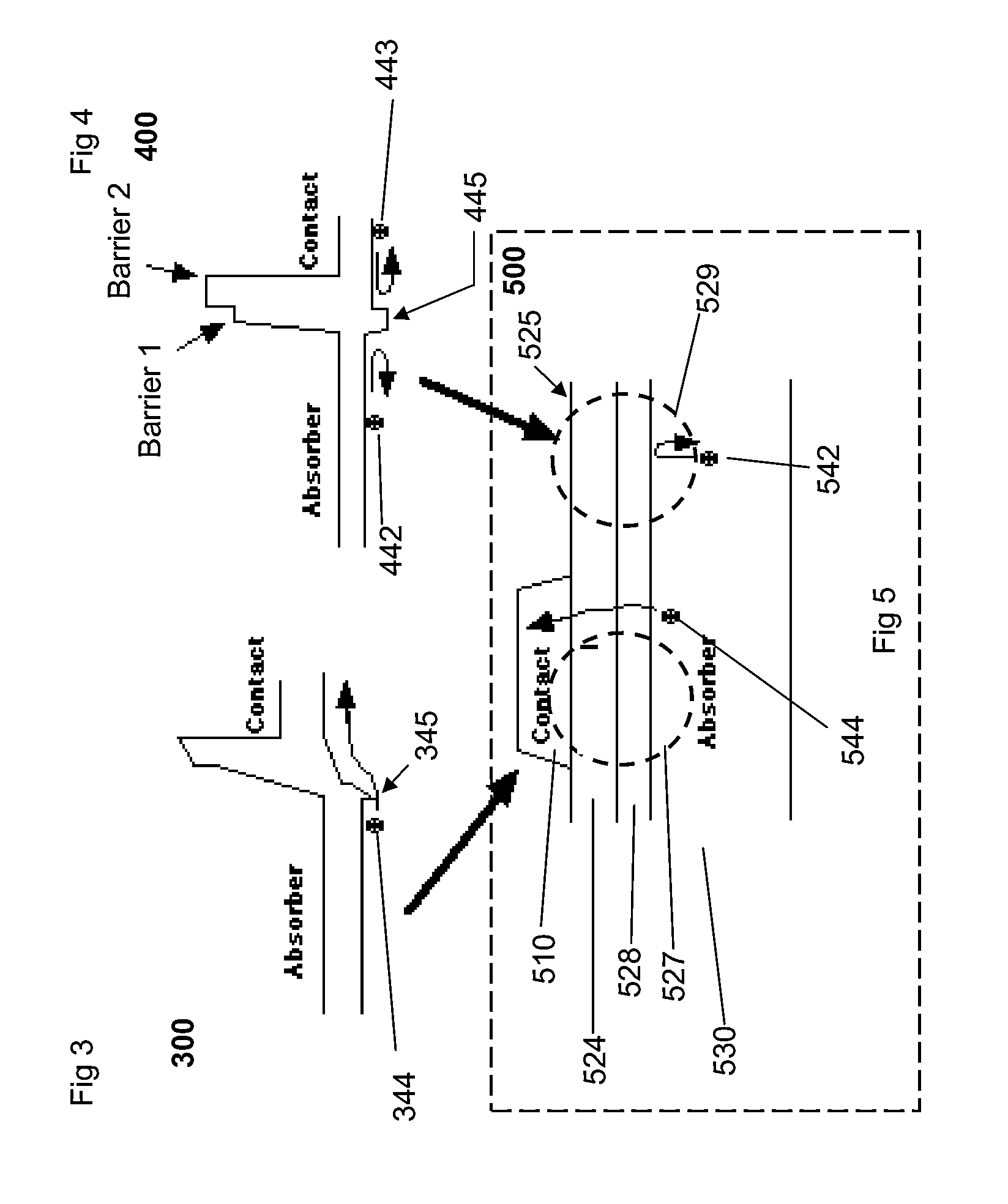Compound-barrier infrared photodetector
a technology of infrared photodetector and compound barrier, which is applied in the direction of solid-state devices, semiconductor devices, radio-controlled devices, etc., can solve the problems of variations in electric field in the narrow-bandgap absorber region of the detector structure, and the failure to provide mechanisms to minimize the effects of surface recombination/generation in the periphery
- Summary
- Abstract
- Description
- Claims
- Application Information
AI Technical Summary
Benefits of technology
Problems solved by technology
Method used
Image
Examples
Embodiment Construction
[0027]The following papers are incorporated by reference as though fully set forth herein: U.S. Pat. No. 7,687,871 Reduced Dark Current Photodetector by Shimon Maimon, issued 30 Mar. 2010.
[0028]In the following detailed description, only certain exemplary embodiments of the present invention are shown and described, by way of illustration. As those skilled in the art would recognize, the described exemplary embodiments may be modified in various ways, all without departing from the spirit or scope of the principles of the present invention. Accordingly, the drawings and description are to be regarded as illustrative in nature, and not restrictive.
[0029]The problems described in the background section are at least partially solved by the principles of the present invention, including, by using a multiple layer barrier structure where each layer may be doped or undoped. The structure of an embodiment of the principles of the present invention uses a barrier structure comprising multip...
PUM
 Login to View More
Login to View More Abstract
Description
Claims
Application Information
 Login to View More
Login to View More - R&D
- Intellectual Property
- Life Sciences
- Materials
- Tech Scout
- Unparalleled Data Quality
- Higher Quality Content
- 60% Fewer Hallucinations
Browse by: Latest US Patents, China's latest patents, Technical Efficacy Thesaurus, Application Domain, Technology Topic, Popular Technical Reports.
© 2025 PatSnap. All rights reserved.Legal|Privacy policy|Modern Slavery Act Transparency Statement|Sitemap|About US| Contact US: help@patsnap.com



